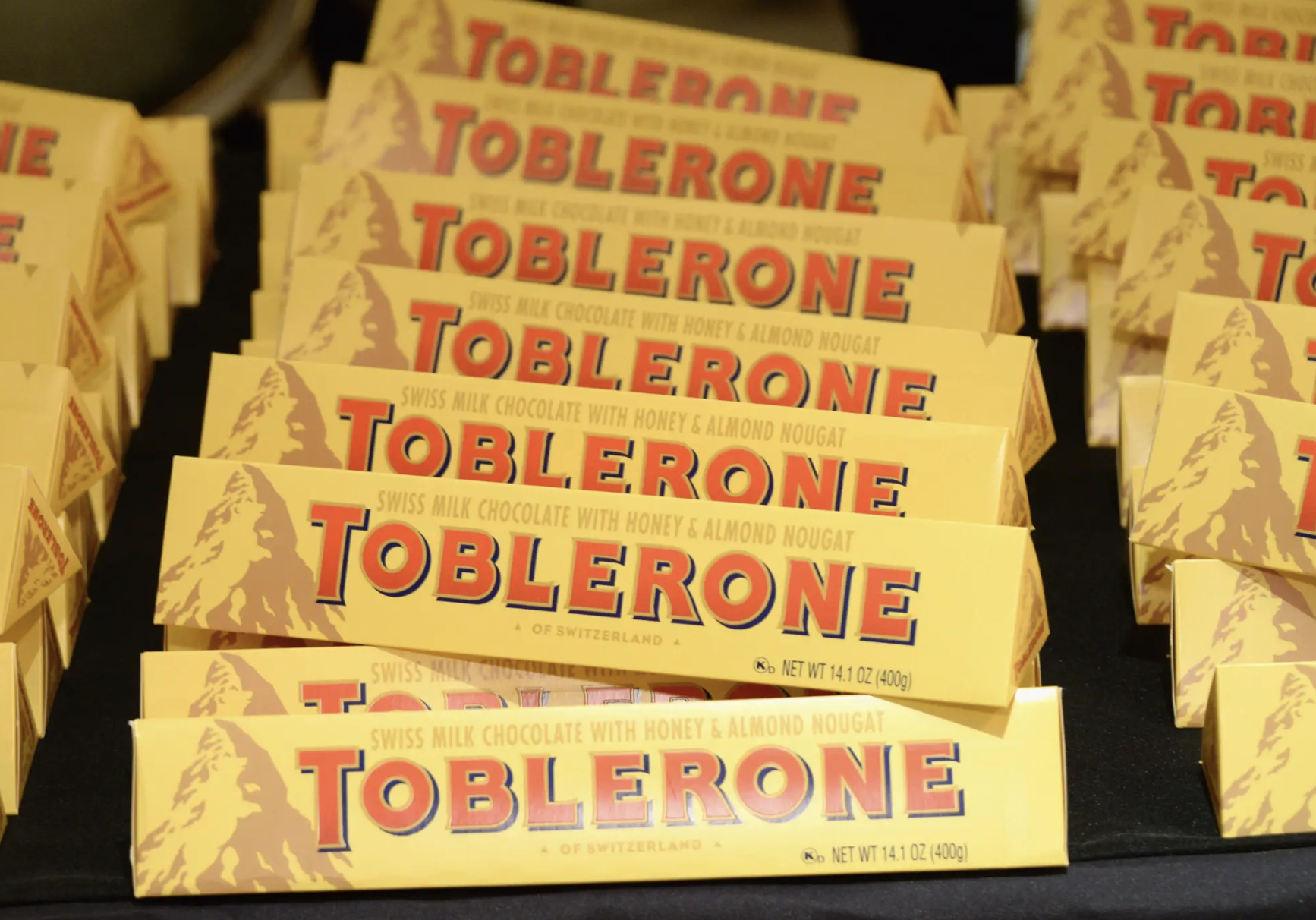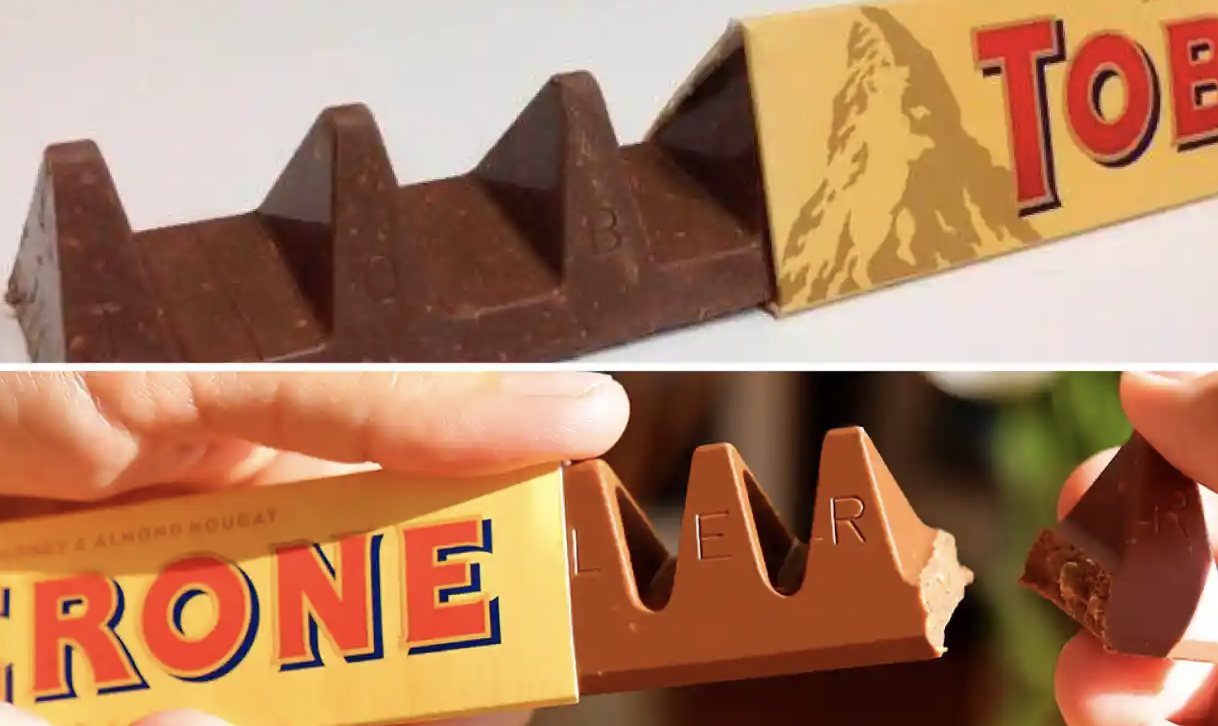Toblerone, the beloved chocolate brand with a unique triangular shape resembling mountains, has made headlines recently due to a shocking change.
The iconic image of the Matterhorn mountain, which has been a staple of Toblerone’s branding for the past decade, will be removed from its packaging.

Swiss chocolate brand Toblerone is finding a new logo design after being banned from using an image of the Matterhorn mountain on its packaging. The Matterhorn mountain, one of Switzerland’s most iconic symbols, was featured on Toblerone’s packaging for many years.
Here’s all you need to know.
A Brief History Of Toblerone
Established in 1899 by cousins Emil Baumann and Theodor Tobler, the chocolate has been manufactured in the Swiss city of Bern since 1908.
Other than the mountain, the bear, an iconic symbol of Bern, was depicted on the mountain on the packaging.

The name “Toblerone” combines the inventor’s surname, Theodor Tobler, and “torrone,” a traditional toasted-almond nougat candy commonly consumed during Christmas celebrations in southwestern Europe.
Why The Sudden Change?
The Swiss parliament passed new legislation around using national symbols on products in 2013 to prevent overuse and commercialization.

This was done through the Swissness Act, which restricted the use of national symbols and Swiss crosses on the packaging of products that do not meet the statutory criteria for “Swiss origin”.
This varies depending on the product category (natural products, food, industrial/other products, services etc.).
For edible products like Toblerone, 80% of the raw materials must be sourced from Switzerland- this requirement is 100% for milk and dairy.
The only exceptions are products such as cocoa that cannot be produced in Switzerland due to natural conditions.
Several studies have indicated that added value from the brand “Swiss-made” or “Made in Switzerland” can account for up to 20% of the purchase price for specific products. This goes up to 50% for high-end luxury items compared to similar products from different countries.
In addition, Tolberone’s parent company, Mondelēz International, announced last year that some of Tolberone’s production would move to its plant in Slovakia.
For the first time since 1908, Toblerone will cease to be produced solely in Bern. This may have caused the chocolate to fail to meet Switzerland’s legal definition of “Swissness”.
How did Tolberone react?
Parent company Mondelez International stated it is committed to finding a new design that will comply with the new regulations.
“The packaging redesign introduces a modernized and streamlined mountain logo that aligns with the geometric and triangular aesthetic,” said a Mondelēz spokesperson to the Swiss-German newspaper Aargauer Zeitung.
“Toblerone packaging will now read ‘established in Switzerland'”.
Despite the ban on using the Matterhorn image on Toblerone’s packaging, the brand remains one of Switzerland’s most famous exports, with a loyal following worldwide.
The Matterhorn mountain has played an important role in Swiss culture and history. It was first scaled in 1865 and has become a popular destination for climbers and tourists.
The mountain has also been featured in many Swiss products, from watches to chocolate bars, as a symbol of the country’s natural beauty and ruggedness.
Toblerone’s Controversies
Toblerone has had its fair share of controversies, with one such case happening in 2016.
Back then, Toblerone provoked outrage by expanding the gaps between the triangular pieces on chocolate bars sold in the UK without adjusting the price, reducing the overall weight by more than half.

In Germany, the number of triangular pieces in Toblerone bars decreased from 15 to 11. The company faced intense criticism from the public.
Two years later, they reverted the chocolate bars to their original shape.




